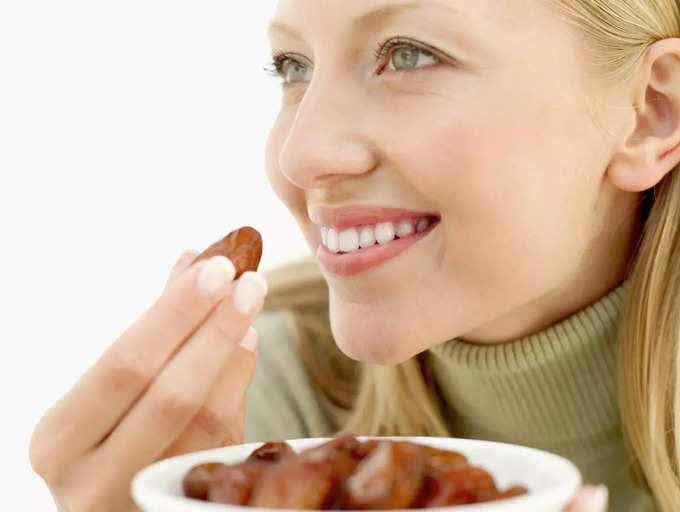Eating prunes shown to protect against bone loss
It’s already well known that prunes are good for your gut, but new Penn State research suggests they may be good for bone health, too.

[Feb 9, 2022: Katie Bohn, Penn State]
Researchers found that prunes can help prevent or delay bone loss in postmenopausal women, possibly due to their ability to reduce inflammation and oxidative stress, both of which contribute to bone loss. (CREDIT: Creative Commons)
It’s already well known that prunes are good for your gut, but new Penn State research suggests they may be good for bone health, too.
In a research review, the researchers found that prunes can help prevent or delay bone loss in postmenopausal women, possibly due to their ability to reduce inflammation and oxidative stress, both of which contribute to bone loss.
“In postmenopausal women, lower levels of estrogen can trigger a rise of oxidative stress and inflammation, increasing the risk of weakening bones that may lead to fractures,” said Connie Rogers, associate professor of nutritional sciences and physiology. “Incorporating prunes into the diet may help protect bones by slowing or reversing this process.”
The review was recently published in the journal Advances in Nutrition.
Osteoporosis is a condition in which bones become weak or brittle that can happen to anyone at any age, but according to the researchers is most common among women over the age of 50. The condition affects more than 200 million women worldwide, causing almost nine million fractures each year.
While medications exist to treat osteoporosis, the researchers said there is a growing interest for ways to treat the condition with nutrition.
Related Stories
“Fruits and vegetables that are rich in bioactive compounds such as phenolic acid, flavonoids and carotenoids can potentially help protect against osteoporosis,” said Mary Jane De Souza, professor of kinesiology and physiology, “with prunes in particular gaining attention in previous research.”
According to the researchers, bones are maintained throughout adult life by processes that continually build new bone cells while removing old ones. But after the age of 40, this breaking down of old cells begins to outpace the formation of new ones. This can be caused by multiple factors including inflammation and oxidative stress, which is when free radicals and antioxidants are unbalanced in the body.
Prunes, however, have many nutritional benefits such as minerals, vitamin K, phenolic compounds and dietary fiber – all which may be able to help counter some of these effects.
For their review, the researchers analyzed data from 16 preclinical studies in rodent models, ten preclinical studies and two clinical trials. Across the studies, the researchers found evidence that eating prunes helped reduce inflammation and oxidative stress and promoted bone health.
For example, the clinical trials found that eating 100 grams of prunes — about 10 prunes — each day for one year improved bone mineral density of bones in the forearm and lower spine and decreased signs of bone turnover.
Additionally, eating 50 or 100 grams of prunes a day for six months prevented loss of total bone mineral density and decreased TRAP-5b — a marker of bone resorption — compared to women who didn’t eat prunes.
“Taken together, evidence from in vitro, preclinical studies, and limited clinical studies suggest prunes may help to reduce bone loss,” Rogers said. “This may be due to altered bone turnover and by inhibiting inflammation and suppressing markers of oxidative stress.”
The researchers said one potential mechanism for the effects is prunes triggering a change in the gut microbiome that then lowers inflammation in the colon. This may then lower levels of pro-inflammatory cytokines and markers of oxidative damage.
In the future, the researchers plan to further report on the effects of prune consumption for 12 months on bone outcomes, inflammatory pathways and the gut microbiota in a randomized controlled trial that was led by De Souza.
Janhavi Damani, graduate student in the Huck Institutes of the Life Sciences; Hannah VanEvery, graduate student in nutritional sciences; and Nicole Strock, postdoctoral scholar in kinesiology, also participated in this work.
The California Dried Plum Board helped support this research.
Note: Materials provided above by Penn State. Content may be edited for style and length.
Like these kind of feel good stories? Get the Brighter Side of News' newsletter.
Tags: #New_Discoveries, #Prunes, #Bone_Health, #Fruit, #Healthy_Eating, #Medical_News, #Science, #Research, #The_Brighter_Side_of_News
Joseph Shavit
Head Science News Writer | Communicating Innovation & Discovery
Based in Los Angeles, Joseph Shavit is an accomplished science journalist, head science news writer and co-founder at The Brighter Side of News, where he translates cutting-edge discoveries into compelling stories for a broad audience. With a strong background spanning science, business, product management, media leadership, and entrepreneurship, Joseph brings a unique perspective to science communication. His expertise allows him to uncover the intersection of technological advancements and market potential, shedding light on how groundbreaking research evolves into transformative products and industries.



